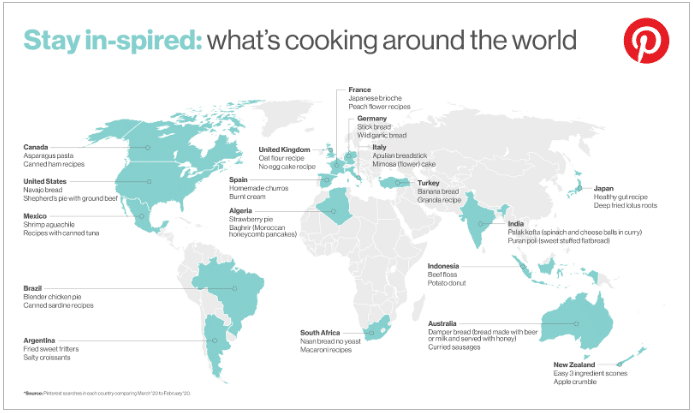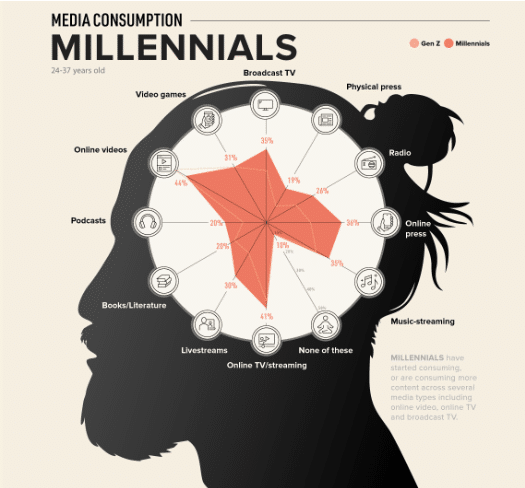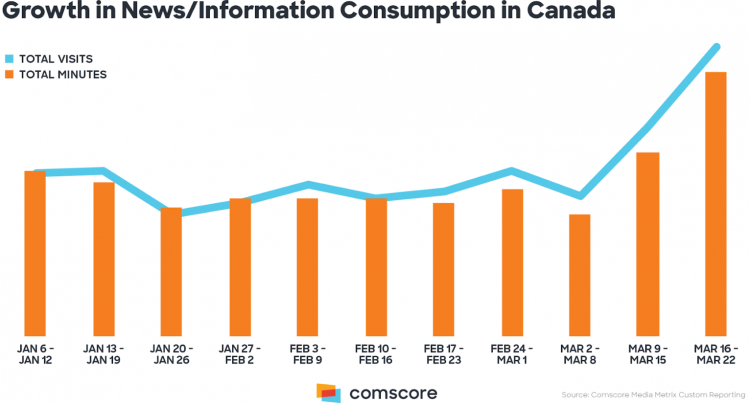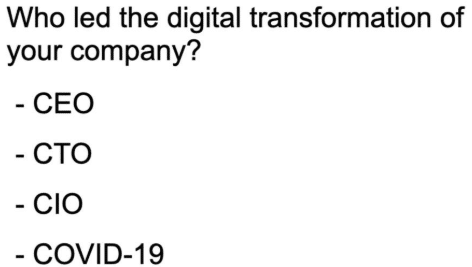Content Marketing and Customer Experience Consultant
COVID-19: Diary of a marketer
Content Marketing and Customer Experience Consultant
Marketers don’t have an easy job at the moment. Since COVID-19’s eruption, marketing operations went from business as usual to crisis management in the blink of an eye, forcing strategists and managers to ask themselves big questions and make difficult decisions. With the initial focus on crisis management dissipating, marketers must now adapt to a new reality, however temporary it may be, and start planning next steps while attempting to minimize short-term risk.
We are all up against the same challenges. Looking for inspiration in our peers’ real-life experiences and innovations can sometimes help us find part of a solution, or at least, put a few ideas on the back-burner for later. It’s this mode of thinking that motivated us to launch our “marketers’ diary”, a living article dedicated to keeping a vigil on our industry while this crisis unfolds.
This article will be treated as a “war diary” of sorts – a streamlined overview of the COVID-19 crisis from marketers’ perspectives, updated regularly throughout the coming weeks. Our research will be presented in the form of highlighted facts, press reviews, and a curated list of the best-of in our industry. Content creation during COVID-19 is moving at lightning speed – we are therefore taking it upon ourselves to search, sort, analyze, and synthesize.
Here are the three main content pillars of this diary :
- The current situation and how it impacts consumers businesses
- Behavioral pattern that might become the new normal
- Sustainable assets to build and digital transformation for businesses
We especially want to look ahead and focus on our projections of the aftermath of it all, and on agencies’ responsibility in accelerating businesses’ digital transformation. With the help of this diary, we aim to equip peers passionate about marketing, anxious about the future of their industry, or quite simply, those curious about what is happening on the Web. May it accompany you through these tumultuous times and guide you in the preparation of your digital future.
1. COVID-19’s impact on consumer behaviour - how can brands and businesses adapt?
News from April 23
- Everyone’s on eComm – As discussed in previous weeks, the explosion in digitization and the transition to e-commerce continues for many businesses. The most recent example comes from the performance of the Shopify ecommerce platform, which has seen its traffic explode with the increase of online shops. The result? Traffic passing through Shopify’s platform and the shops it hosts is continually reaching levels similar to Black Friday. (Techcrunch, April 17, 2020)
- Bread, Bread and More Bread! – More time spent at home means more time to discover your hidden chef talents. Pinterest reported significant increases in the recipe category, including bread. Research also shows that users are exploring outside their comfort zone by looking for more niche recipes. For example, in France, the search volume for “Japanese brioche” increased by 1,081%! (Pinterest, April 15, 2020)

- Banking Call Centres Under Pressure – The temporary closure of bank branches has caused a dizzying volume of calls to financial institutions. We can already see a change in customer needs: prior to the crisis, customers asked for information about financial aid options without committing, but now, customers are more likely to take action. The overload of calls has also forced banks to encourage their customers to prioritize using their digital tools when possible. (Mobile Payments Today, April 17, 2020)
- “Ready Player One” or the way to the “Metaverse”? – With quarantine and social distancing policies likely being extended, businesses in the cultural and recreational industry are trying to work together to create a new virtual “world”. Social distancing measures will no doubt prevent the reopening of concert halls, cinemas, and other gatherings in the near future.
- Key players in the gaming world are trying to create this virtual world, from Epic Games with events in its popular game Fortnite (as they did with the launch of the last Star Wars), who’s next event will allow players to see Travis Scott’s avatar unveil his latest song in the game for free, or Facebook, which just launched a new livestreaming platform to compete with Twitch and Mixer.
- In the same vein, more and more artists are looking for a way to continue their practice digitally. Some have turned to crowdfunding via YouTube, Twitch and Instagram, while others are experimenting with Pay Per View, with solutions such as Stageit, which allows users to create a show or a podcast requiring a ticket purchase. The platform also uses live commenting tools, so that the interaction like you’d experience at a concert can be partially recreated. (Epic Games, April 20, 2020, Reuters, April 19, 2020 and Bloomberg, April 20, 2020)
April 16 News
- eComm Diagnostics – Is your ecommerce site adapted for the new reality of COVID-19? Omniconvert, an optimization platform, can run a diagnostic on your site: all you need to do is answer 12 questions which cover your knowledge of your users, your performance analysis activities, as well as your media investments. Despite the final product demo and sales objectives, the questionnaire allows us to open our eyes to the actions online retailers should prioritize on their sites. (Omniconvert, 2020)
- Get inside the consumer’s head – Data visualization can generate different insights than just presenting information in a way that provokes reason and reflection. This is exactly what Visual Capitalist proposes in their interpretation of the new study by Global Web Index on media consumption by generation. (Visual Capitalist, April 7, 2020)

(Global Web Index, avril 2020)
-
- The Brand Renaissance – Not all brands have suffered from changing consumer behaviours, some have actually benefited from it. Kraft Heinz, which struggled in the past few years due to food trends and a focus on health, saw a 3% increase in sales thanks to comfort foods such as Kraft Dinner, Shake n’ Bake and Cool Whip. Making a good meal is one way to keep yourself busy at home, but puzzles were also a choice activity across all groups of consumers.The manufacturer Ravensburger saw an increase in sales of 286%, with an average of 20 puzzles purchased per minute! (Morning Brew, April 13, 2020)
- Crisis & Punishment – In line with the previous point, some brands have understood very well how to communicate in a crisis situation (for example: Speedo and its fitness exercises programs, Evans Cycles and its home-repair advice) while others have not properly adapted their communications strategy (Massino Dutti and traveling) or who are “showing off” too much. For example, car ads running on YouTube for companies like Volkswagen and Dodge RAM are particularly tone deaf examples (Search Engine Journal, April 6, 2020)
- Beauty Routines on the Decline – While clothing style has certainly changed (Walmart noted an increase in sales for tops but not bottoms), have beauty routines changed as well? Women wear makeup on average 1.2 times per week, compared to 3.2 times before social distancing measures. On the other hand, men are much more adventurous with their hair, with 34% of men saying that they will be cutting their own hair in the absence of salons. (Strategy, 13 avril 2020)
- Act Quickly, Reinvent Yourself, Demonstrate Value – We have two examples of brands that were forced to get out of their classic strategic vision to find a new modus operandi. The first example, Airbnb, which has suffered the full impact of almost total cessation of tourism for two months, has to pivot completely to focus on the virtual experience service they recently launched, including coaching, learning or virtual visits. OpenTable is a second example: they launched a functionality allowing their restaurants providing takeout or grocers to control the flow of withdrawals and entry in the stores, so the customers can avoid queues (AirBNB & OpenTable, February 12, 2020)
April 8 News
- Information Obsessed – Digital content consumers have never been more informed. We saw a significant increase in news and current events media consumption in Canada, across multiple categories: general news, local news, business and finance, politics, and even the weather. From the frequency of visits, volumes of users and screen time, consumers are plugged into news cycles 24/7. (Comscore, April 1, 2020)

- Prevention & Private Life: When Worlds Collide – Facebook launched its “Data for Good” project, which uses its data to help public health departments visualize risk by location to predict spikes in COVID-19 cases before medical centres become overwhelmed. Facebook also uses movement data from mobile devices, as well as friendship networks to identify which regions are more prone to a major outbreak. Despite the fact that the data is anonymized, some fear that if the effects of the virus are felt beyond a few weeks, the notion of anonymity will give way to targeting and monitoring specific users who do not seem to respect the instructions of quarantine. (Social Media Today, April 7, 2020)
- Events 2.0 – In the wake of quarantine, events and event planning, which literally shut down, have to reinvent themselves very quickly, to the point of testing iconoclastic solutions that risk revolutionizing this industry very quickly. Apart from the growth in use of Youtube Superchat for livestreams for certain influencers and a switch to webinar mode via platforms like Livestorm, other events quickly switched to Twitch, with the management of speakers through Google Hangouts, such as SEO4Life . Other events, seeking to recreate an agora atmosphere, are trying to take it one step further in a professional context – this is the case for Laval Virtual, a conference that takes place around the world online from April 22-24, 24 hours a day, via the platform Virbela. (Laval Virtual, April 6, 2020)
- Glued To My Screen – A new study confirms that there have been significant changes in online consumer behaviours. Comcast, the leading internet provider in the United States, reported an overall growth of 32%, with a more than 52% increase in video game downloads and a 38% increase for online video consumption (at the expense of broadcast television). VOIP (Voice over IP) and teleconferencing are also up +212%, and social platforms are up 50%. (Morning Brew, April 4, 2020)
- Web Traffic Winners & Losers – This infographic on e-commerce behaviour in the United States over the past few weeks is particularly revealing: the big winners were home gym equipment, bread-making machines, hair dye products, as well as office supplies and computer screens. Among the losers were golf clubs, camping equipment, sunglasses, and cameras. All of this indicates that, in the consumer’s eyes, the crisis will last long and they are already predicting an impact on their summer activities. (Stackline, March 31, 2020)
News from 2 avril
- Confinement, social distancing, and closed public spaces – Left without many options, the culture industry must reinvent itself very quickly. It does so by dipping into methods of the past (radio theater) or by experimenting with new media (Instagram, virtual visits, livestream). (Uzbek&Rica, March 23, 2020, sources in French)
- Confinement, lower audiences and traffic – How can organic take the reins now that media campaign budgets are being slashed? Two main pillars should be considered :
- Secure and work on the back-end, both in terms of content strategy (inventory, clean-up, updates, deleting non-performing content) and technical components (optimizing page-loading speed, tagging), while taking advantage of this forced hiatus to work on tasks often put off in favour of client-facing initiatives.
- Experiment and test new acquisition channels (referral, native ads) by using content in other forms (images, videos, podcasts, etc.). (Distilled, March 19, 2020)
- “The return of Maslow’s hierarchy of needs?” – An interesting analysis of drastic traffic changes in France since the beginning of March 2020, with a focus and strong spike on sites with practical, educational, escapism, and cooking components. (TouchpointMedia, March 26, 2020, source in French)
- Mental health during COVID-19 – Back in February, Snapchat announced a new feature that would offer resources like content and tips focused on their users’ mental health, and would be launched in April. Following the spread of the virus in North America, the platform, who’s users average between 13 and 24 years old, sped up the launch and added a section dedicated to the pandemic that aims to ease anxiety with the help of experts. (The Verge, March 3, 2020)
- Beyond the standardized email – Consumers are bombarded with emails from businesses communicating their “game plan” for COVID-19. But do you connect with users and go beyond “Phase 0”? Start by identifying problems usually solved by your brand and services, and how you position yourself in your consumer’s day-to-day. (Sid Lee, March 25, 2020)
- A brand success story, or how Yelp saw an opportunity to take initiative over Google by testing a new business model – Adding a button allowing to give money to its members, based on the Twitch and Patreon model. (Search Engine Journal, March 24, 2020)
2. Can we anticipate that consumer behavior will change on the long-term?
Observations on audience behavior – Moving towards a recession psychology, where expectations will make way to groups of population motivated by psychological aspects more so than purchasing behaviors. 4 groups are identified :
- 1. The slam-on-the-brakes group : anxious and vulnerable, this group will lower its purchases to a minimum ;
- 2. The pained-but-patient group : less anxious and maintaining a sense of optimism on the long-term, all while reducing purchases on the short-term ;
- 3. The comfortably well-off group : this group knows or thinks it will get through the storm easily because they have more savings, therefore limiting the impact on their spending while being a little more cautious ;
- 4. The live-for-today group : often younger, this group will reinforce past behavior, and while staying optimistic for the future, will limit spending except save for experiences. (Harvard Business Review, 2009, cited by Search Engine Journal, March 24, 2020)
The worst is yet to come – The effects of the virus will be felt for months to come, and the peak is at our door, according to a survey conducted by Boston Consulting Group. In the United States, over 70% of respondents claimed that the worst of COVID-19 is not finished and that an economic recession is inevitable. Income will therefore be spent differently, with less emphasis on products and more on savings, despite that potential revenue loss may lead to savings taking a hit. (Boston Consulting Group, March 23, 2020)
September, the beginning of the end? – Canadians anticipate that COVID-19 will no longer be a major problem by September, an attitude of the virus’ longevity that is a little more conservative than the global average estimate of August. It’s important to note that this estimate parallels the virus’ progression, and that the average answer was July a mere 3 weeks ago…(IMI, March 30, 2020)
Grocery shopping done differently – An inescapable behavioral change during the crisis will have definitely been the impressive explosion of online grocery shopping. Thanks to social distancing recommendations and generalized anxiety, sales of food products online have gone from 1.5% to 9% in Canada since the beginning of the virus spread. Now highlighted are the logistic and technological issues of online ordering systems, as well as the need to continue convincing consumers that this is an efficient way to shop once the crisis is over. (L’actualité Alimentaire, March 25, 2020, source in French)
A larger playing field in the food industry – Has this crisis shown the limits of globalisation and neoliberal free-market? Maybe not in its entirety, but at least on this essential front – that Ricardo’s comparative advantage? One of the main weaknesses showcased by the virus has been to highlight many countries’ extreme dependence in terms of product and material supplies (masks, screening tests, hydroalcoholic gels, but also some products of mass distribution). Will this lead us to question this foundational free-market principle and lead to reattribution processes of certain industrial activities? (Marianne, March 23, 2020 et Le Figaro, March 30, 2020, sources in French)
3. What digital transformations will marketing and agencies, in their respective roles, face in the long-term?
Small businesses are in peril – Unsurprisingly, independent businesses are taking a hit at the moment. 55% of small businesses are completely or partially closed, and revenues are dropping significantly. Even more alarming, a third of businesses claim they will not be able to survive more than a month under these conditions. We can speculate that these companies do not currently have an e-commerce in place, and are therefore shackled to governmental regulations. (Canadian Federation of Independent Business, March 23, 2020)
“The emperor has no clothes”, or the need to reclaim initiative – Who decides which actions to take on the digital front, in the middle of a storm? This tongue in cheek image reflects an all-too-common reality, which shows that many brands and businesses have lost their sense of initiative and operate reactively rather than proactively. (Discord, March 30, 2020)

Crisis management kit for brands and businesses – Practical and straight to the point, this guide helps you decipher how to be helpful to your customers and emerge strong. In a nutshell, stay calm, approachable, fight the urge to have an opinion on everything, and find ways to make your brand relevant through its expertise. (BBH London, March 24, 2020)
Context, context, context – Regardless of the status of your marketing assets, the question surrounding context when managing current campaigns and of the data captured in the next weeks and months will be a priority and need to be inserted in all performance analysis. The disruption of the status quo in marketing also represents an opportunity to speak to our users differently through digital channels, and assess how our brand and customer experience are faring. (Think With Google, March 29, 2020 et Strategy, March 18, 2020)




